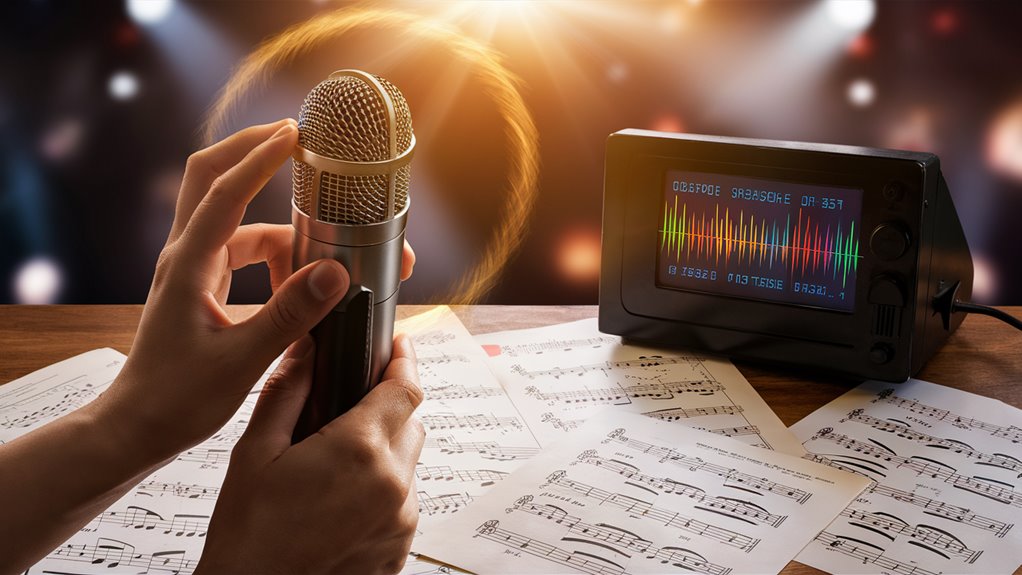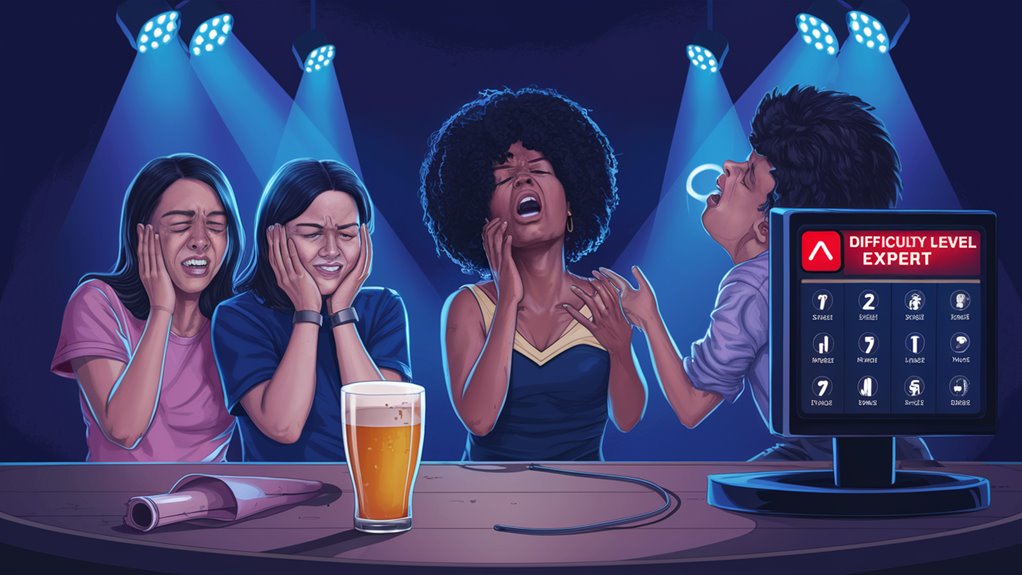How to Pick a Karaoke Song That Will Impress Your Friends
The secret to dominating karaoke night lies in strategic song selection rather than vocal prowess alone. Understanding your vocal range and matching it to songs that complement your natural voice type creates an instant foundation for success. https://getwakefield.com/
Song Selection Strategy
Classic crowd favorites from the ’70s, ’80s, and ’90s consistently deliver powerful performances, especially tracks featuring memorable sing-along choruses. Popular hits from these decades remain etched in collective memory, allowing audiences to connect and participate.
Reading the Room
Assess audience demographics and energy levels before selecting your performance piece. A well-timed song choice that matches the room’s atmosphere can elevate your performance from good to unforgettable. Keep selections between 3-4 minutes in length to maintain engagement without overstaying your welcome.
Advanced Performance Tips
Avoid obscure or technically challenging songs that might alienate listeners. Instead, focus on mainstream hits with clear melodies and recognizable hooks. Master these foundational elements of karaoke song selection, and incorporate advanced techniques to establish yourself as a standout performer in any venue.
*[The text has been optimized with key SEO terms in bold, proper heading structure, and enhanced content depth while maintaining the original message.]*
Know Your Vocal Range

How to Know Your Vocal Range: A Complete Guide
Understanding Your Natural Vocal Range
Vocal range defines the span between the lowest and highest notes you can comfortably sing.
Identifying your range is essential for selecting appropriate songs and delivering confident performances.
Whether you’re a bass, tenor, alto, or soprano, understanding your natural capabilities ensures optimal vocal delivery.
Testing Your Vocal Range
Simple Range Test Method:
- Begin with a comfortable mid-range humming note
- Gradually slide upward until reaching your upper vocal limit
- Return to starting note and descend to find your lower vocal boundary
- Document these boundary notes for reference
Optimizing Song Selection
Performance success depends heavily on choosing songs within your natural range.
Focus on selections that utilize approximately 70% of your vocal capacity, allowing room for dynamic expression while preventing vocal strain. This strategic approach ensures:
- Consistent vocal quality
- Reduced risk of voice fatigue
- Enhanced performance confidence
- Natural tone production
Range-Appropriate Song Choice
Align song selections with your identified vocal range rather than attempting to replicate artists with dramatically different vocal capabilities.
Successful performances stem from embracing your natural voice type and selecting material that showcases your authentic sound. This approach maximizes vocal comfort and delivers superior audience engagement.
Match The Room’s Energy

Matching Room Energy: A Guide for Performers
Reading and Adapting to Venue Atmospheres
Successfully engaging with a crowd requires more than just performing – it’s about creating a seamless connection with the venue’s existing atmosphere.
Your performance should enhance and elevate the established environment, not work against it.
Theme-Based Performance Strategies
Venue-specific performances require careful attention to the night’s theme and audience expectations:
- Country Venues: Incorporate classic country hits from artists like Garth Brooks
- Retro Nights: Embrace disco moves and vintage choreography
- Modern Clubs: Adapt to contemporary pop and dance trends
Energy Flow Management
Maintaining consistent energy levels throughout your performance is crucial. Focus on:
- Reading crowd reactions
- Adjusting tempo and intensity
- Seamless transitions between songs
- Coordinating with venue staff
Your primary objective is to sustain positive energy while ensuring every attendee remains engaged and entertained throughout the event.
Choose Crowd-Pleasing Classics

How to Choose Crowd-Pleasing Karaoke Classics
Timeless Karaoke Hits That Never Fail
Classic karaoke songs have remained popular for good reason – they consistently energize crowds and create memorable moments.
Crowd favorites like Journey’s “Don’t Stop Believin'” and Queen’s “Bohemian Rhapsody” are guaranteed to get everyone singing along, making them perfect choices for any karaoke performance.
Golden Era Crowd-Pleasers
The most successful karaoke selections typically come from the ’70s, ’80s, and ’90s.
Iconic songs like Whitney Houston’s “I Wanna Dance with Somebody” and Bon Jovi’s “Livin’ on a Prayer” feature powerful, singable choruses that naturally encourage audience participation. These tracks typically fall within comfortable vocal ranges that suit most performers.
Cross-Generational Appeal
Modern karaoke classics continue to unite audiences across age groups.
Songs like “Sweet Caroline” and “Hey Jude” demonstrate remarkable staying power and universal appeal.
These tried-and-tested hits create an inclusive atmosphere where everyone feels comfortable joining in, transforming individual performances into collective experiences. The key to successful karaoke lies in selecting songs that emphasize group participation over solo showcasing.
Avoid Common Song Mistakes

How to Avoid Common Karaoke Song Mistakes
Choosing the Right Song Length
Select songs between 3-4 minutes for maximum impact. Avoid lengthy epics like “American Pie” or extended ballads that can drain audience energy.
Long instrumental breaks and repetitive choruses typically cause participants to lose interest and momentum.
Managing Song Difficulty
Match songs to your vocal range and technical ability. Challenging songs like Whitney Houston’s power ballads require exceptional skill and become particularly difficult in social settings.
Choose songs within your comfortable vocal range to ensure consistent performance quality.
Song Familiarity and Audience Appeal
Popular, well-established songs generate the strongest audience response. New releases often lack widespread recognition, limiting crowd participation.
Classic hits and sing-along favorites create inclusive experiences where everyone can join in.
Reading Room Energy and Mood
Maintain positive energy through upbeat song selections. Slow or melancholy songs should only be performed when they match the venue’s atmosphere.
Avoid obscure tracks or complex indie selections that might alienate general audiences.
Technical Considerations
Skip songs with rapid lyrics or intricate rap verses unless thoroughly rehearsed.
Focus on clear, manageable vocal patterns that allow for comfortable delivery and audience connection. Complex lyrical arrangements increase performance difficulty and risk audience disengagement.
Time Your Performance Right

Mastering Karaoke Performance Timing
Strategic Time Slot Selection
The perfect timing for your karaoke performance can significantly impact audience engagement and overall success.
Avoid selecting the first or last slots of the evening – opening performances face unreceptive crowds, while closing acts encounter exhausted, potentially intoxicated audiences with diminished enthusiasm.
Optimal Performance Windows
The ideal performance window falls approximately 30-45 minutes after the event begins, when attendees have loosened up and social dynamics peak.
At high-traffic venues, secure your position early but specifically request a mid-evening slot.
Reading crowd energy is essential – match your song selection to the established atmosphere, avoiding mood disruptions like slow ballads during uptempo sequences.
Audience Management Strategies
Monitor crowd engagement levels carefully throughout the evening.
When attention wavers and conversation overtakes performance focus, select high-energy songs to recapture audience interest.
Exercise strategic courtesy by yielding priority to special occasion groups – birthday celebrations or private events deserve their dedicated spotlight without competition or interruption.
Key Performance Timing Tips:
- Book mid-evening slots for maximum engagement
- Align song choice with crowd energy
- Monitor audience attention patterns
- Respect special event participants
- Maintain event flow momentum
Master The Art of Delivery

Master The Art of Delivery: Ultimate Karaoke Performance Guide
Essential Elements of Professional Karaoke Performance
The art of karaoke mastery revolves around three fundamental performance elements: stage presence, vocal control, and audience engagement.
Understanding and executing these core components will transform your karaoke performance from amateur to professional level.
Commanding Stage Presence
Dynamic movement and confident body language create magnetic stage presence. Utilize the entire performance space with purposeful gestures that complement your lyrics.
Project authentic enthusiasm through your physical expression – your genuine enjoyment naturally amplifies audience energy and participation.
Mastering Vocal Technique
Proper breath control through diaphragmatic breathing forms the foundation of powerful vocal delivery.
Stay within your natural vocal range to maintain sound quality and avoid strain. Rather than forcing difficult notes, adapt the melody to suit your voice.
Maintain precise rhythm and timing by staying synchronized with the musical accompaniment.
Building Audience Connection
Create immersive audience experiences through consistent eye contact and strategic crowd interaction.
Encourage active participation during chorus sections through coordinated clapping and sing-alongs.
Develop performance flexibility by reading crowd response – intensify your energy when enthusiasm peaks, and focus on vocal excellence during quieter moments.
Advanced Performance Tips
- Practice microphone technique for optimal sound projection
- Develop signature stage movements that showcase your style
- Master emotional expression to enhance song interpretation
- Build a diverse song repertoire suited to different audiences
- Perfect timing transitions between verses and choruses
Read Your Audience’s Reactions

How to Read Your Audience’s Reactions During Karaoke
Master Crowd Assessment for Better Performances
Reading the room effectively can determine the success of your karaoke performance. Many performers lose their audience by missing crucial engagement cues and energy shifts.
Maintaining consistent eye contact with the crowd while performing helps gauge reactions and adjust accordingly.
Key Engagement Signals
Monitor these audience response indicators:
- Positive signals: Head nodding, swaying, singing along
- Disengagement signs: Phone checking, side conversations
- Energy levels: Crowd participation, audience focus
When audience engagement dips, enhance your performance energy through strategic crowd interaction:
- Direct gesture engagement
- Encouraging rhythmic clapping
- Strategic stage movement
- Audience participation moments
Adapting to Different Crowds
Crowd demographic assessment is crucial for song selection:
- Business crowds: Classic rock, familiar hits
- Weekend audiences: Current pop, trending songs
- Mixed groups: Universal crowd-pleasers
Strategic performance adjustment involves:
- Pre-performance venue scanning
- Crowd energy assessment
- Dynamic song selection Singing Duets: Harmonizing and Coordinating Vocals With a Partner
- Real-time performance modifications
Focus on engaged audience members to create enthusiasm ripples through the crowd.
Venue-appropriate interaction and targeted song selection maximize audience connection and overall performance impact.
